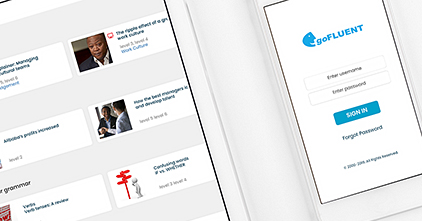In our current era, L&D and HR leaders need to go beyond delivering training programs and tracking progress. Modern times call for them to be content creators as well. Read this to know how:

As we all know, content creation (and curation) isn’t new to L&D and HR. We’ve all been talking about it since a few years ago. But what makes this more relevant in today’s workplace landscape is the fact that our current situation has dramatically boosted technology adoption in businesses.
And this is where the opportunity lies! Digital technologies for learning should be leveraged to increase engagement, productivity, and training and development effectiveness at work.
Actually, in the past, L&D leaders and corporate trainers only deliver training programs for their employees and act as moderators that oversee training processes. But in today’s modern workplace, they’re also expected to be content creators, curators, and of course, efficient communicators.
But this doesn’t mean that you as a learning leader should do the bulk of the work. You still need to outsource training solutions providers to help you in the formal aspects training. Think of your content as supplementary materials for your employees’ learning and development.
So whether you’re a newbie in corporate training or a seasoned veteran, you’ll get a thing or two here, so read on! Here are the steps on how corporate trainers can become effective content creators at work:

1. Define your target audience.
First and foremost, it’s very important to get to know your learners’ needs and goals before creating educational content for them. Obviously, your main audiences here are your employees and learners. But your content strategy will depend on various factors.
Some questions you can ponder on while considering your learners are:
- What are their respective job responsibilities and industries in your organization?
- What are the learning objectives and goals set to them by their direct managers?
- What are the skills gaps within your organization and how can your training program(s) address these?
- How can you manage their expectations towards L&D programs?
- How can your content address some gaps they may have been experiencing in their respective training programs?
These questions will not only help you get to know your employees more, but these can also aid you in creating more learning opportunities and meeting some of their demands.
For instance, if you find out that communication is one of the top skills gaps within your sales team, you can immediately contact a language training provider and request a free demo of their products and services. After this, if you’re convinced, you can market this program to your stakeholders, including executives of course!
This is where the need for right communication channels come in in your role as a content creator in today’s training and development sphere.
2. Determine their preferred content types and communication avenues.
After determining your audience and their objectives, it’s now time to communicate with them. The main point here is to always meet them where they are. Are they more likely to visit Linkedin? Do they stay updated through your company blog? A dedicated Facebook group for their team or department? Or maybe an internal newsletter is more effective in getting their attention?
According to HR Technologist, effective communication is one of the top signs of a high-performance culture and is central to all business goals. This is why when it comes to workplace learning, it’s best to know where your learners are.
One way to do this is through surveys where you can ask questions about what communication platforms your employees are using, how much time they spend on it, when do they usually use it, and such questions.
Moving on, another thing to consider is the content types you’ll be creating. According to the Association for Talent Development (ATD), trainers should also now be TV producers since most employees demand for video learning.
And they’re right! Using short bursts of video content doesn’t only engage your learners, but it also makes them more interested to learn. This means that you can and have to create video content that breaks down complex subjects and explain things in a familiar way.
But producing great videos requires a robust set of skills such as:
- Edutorial skills – About the learning and training aspects of video including mastering instructional design, analyzing learning needs, identifying objectives, and aligning the educational content to your business goals
- Editorial skills – Related to the skills of traditional TV producers such as having the eye for technicalities on screen, knowing how to edit content with a smooth flow, and creating content that are easy to understand
- Production skills – Associated with using certain equipment and managing the production workflow
For example, aside from the formal microlearning videos you can get from a training solutions provider, you can create videos that are specific and within a familiar context that all your learners can relate to. Better yet, create company exclusive content that can be used by all your employees (e.g. onboarding videos) that can be easily shared and used across departments. This then can help you create a conducive learning environment that builds your learners’ confidence in upskilling and reskilling.

3. Open opportunities for two-way communication.
In marketing, one of the main purposes of content is to engage your audience. The same goes with L&D. In fact, Linkedin Learning reported that learner engagement is still a top priority for organizations worldwide especially in the US.
So you really need to engage your learners and other stakeholders through open communication. For you to achieve open communication within your company, consider doing these:
- Create an email for questions, comments, and concerns about any L&D-related content.
- Allow comments on posts in your company blog and assign moderator(s).
- Assign key persons to address the emails and comments for L&D-related questions.
- Cultivate a feedback culture within your organization through continuous feedback.
4. Set a schedule for your content.
Consistency is the key!
So it’s best if you always have a dedicated schedule. The thing here is that consistency allows meeting of expectations and builds trust in your brand and business. And unfortunately, many companies are having a hard time obtaining these from their employees.
Some of the areas you need scheduling are in:
- Creation of content
- Posting and publishing of content
- Promotion of the content (think like a marketer!)
- Checking for quality and accuracy
- Editing information that needs changing and updating
- Engaging with learners and stakeholders who comments and responding to their questions
This is also why having a solid content strategy for L&D is necessary (which we’ll discuss in another blog). Even if you’ve been producing great articles, videos, and other learning content, it’s also better if you audit and update your content and of course, engage with your learners right at their own points of need.
5. Collaborate with different stakeholders.
Lastly, be open to collaboration. As an example, you can ask some of your employees to contribute to your company blog through writing about their insights on L&D, similar topics, and some latest trends and news within their fields and industries.
Another collaborative project you can do is to partner with your internal subject matter experts (SMEs) for more specialized and technical educational content. For instance, you can create a lecture series about more effective telecommuting. Here, you can work with your colleagues in tech, marketing, communications, etc. You can also do this to improve your social learning initiatives even if your workplace is mostly virtual.
To top it all off, let your learners lead. Besides, they’re your main stakeholders. Constantly ask them what their needs are and try to accommodate them as much as possible, as long as it aligns with your business objectives and as long as your resources allow. Collaboration with different people in your organization can help you create a people-centric learning environment, encouraging continuous growth and development.

The Takeaway
The bottom line is that L&D leaders and HR professionals need to go beyond their usual tasks to be able to create an effective training program and engage their employees. But of course, this won’t be made possible without executive sponsorship. This goes down to having a solid communication strategy that can help you put your content where learners can see and use them.




